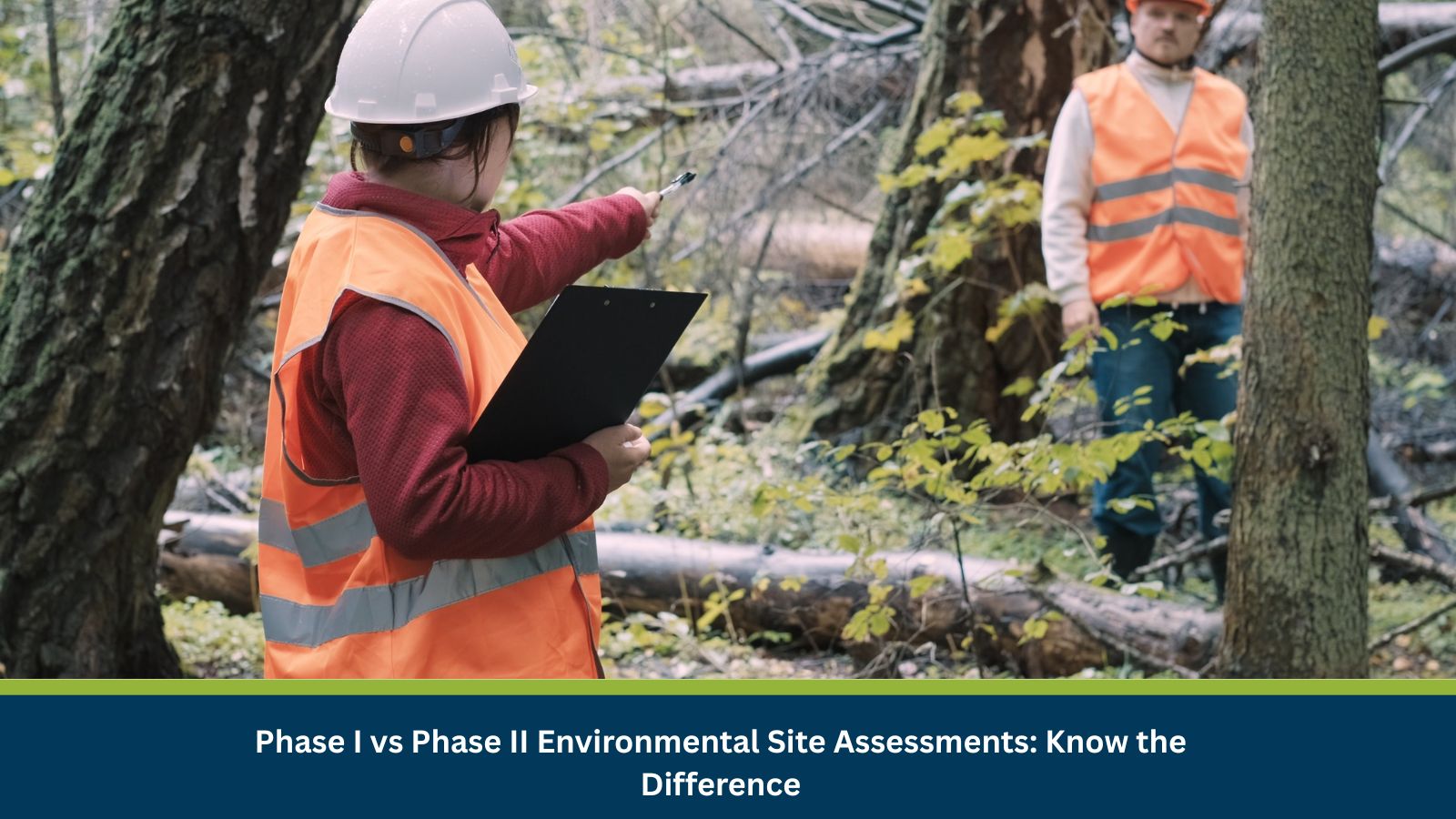Why ESAs Matter in Risk & Due Diligence
When organisations acquire, finance or repurpose real estate assets, a critical but often overlooked dimension is environmental liability. Unknown contamination can translate into multi-million remediation bills, regulatory sanctions, and reputational risk. That’s why Environmental Site Assessments (ESAs) are integral to modern risk management.
But not all ESAs are the same. Phase I vs Phase II Environmental Site Assessments serve distinct purposes in the due diligence spectrum. Confusing or misapplying them can lead to gaps in protection or exposure to “unknown unknowns.” For CXOs, CFOs, and security/infrastructure leaders, understanding the difference is key to making prudent investment decisions and protecting the enterprise’s downside.
What Is a Phase I Environmental Site Assessment?
A Phase I ESA is a non-intrusive investigation whose aim is to identify Recognized Environmental Conditions (RECs) potentials of past or present contamination based on historical records, property inspection, interviews, and regulatory database review.
Key elements of Phase I include:
- Historical records review (aerial photos, maps, land-use history) c
- Site inspections (visual observation of property and adjacent lands)
- Interviews with current/past owners, occupants, and local regulators
- Regulatory database searches for known contamination, underground storage tanks, hazardous materials in vicinity
Importantly, Phase I does not include sampling of soil, water or materials, there is no laboratory testing in this phase.
If a Phase I identifies indications or suspicion of contamination (i.e. RECs), then a Phase II ESA is typically recommended.
One crucial legal benefit: performing a compliant Phase I ESA often satisfies regulatory “All Appropriate Inquiry” or “due diligence” requirements, thereby supporting a defence against liability (e.g. “Innocent Landowner Defense” under U.S. law) in many jurisdictions.
What Is a Phase II Environmental Site Assessment?
A Phase II ESA is an intrusive, investigative process triggered when Phase I results suggest potential contamination. Its objective is to confirm or refute the presence, type, and concentration of pollutants and delineate their extent.
Typical components of Phase II include:
- Soil, groundwater, and occasionally soil gas sampling in targeted locations
- Laboratory analysis to detect hazardous substances (e.g. petroleum, heavy metals, solvents, VOCs)
- Comparison against regulatory thresholds to assess compliance or risk
- Extended investigations (e.g. indoor air quality, building materials, ecological impact) if warranted by findings or project scope
- Reporting & interpretation, with recommendations for remediation or further testing.
Because Phase II involves field work, sampling, and lab testing, it is costlier and more time-consuming than Phase I. If contamination is confirmed, subsequent phases (often called Phase III) may define cleanup plans or remediation strategies.
Phase I vs Phase II: Side-by-Side Comparison
| Aspect | Phase I ESA | Phase II ESA |
| Objective | Identify potential environmental risk or RECs | Confirm and quantify actual contamination |
| Methodology | Desk review, site walk, interviews, records | Field sampling, laboratory analysis, possibly geophysical methods |
| Intrusiveness | Non-intrusive (no drilling/sampling) | Intrusive (soil, water, gas sampling) |
| Outcome | Risk “flags” that indicate need for further investigation | Data-backed confirmation or refutation, estimates of concentration and extent |
| Time & Cost | Faster, lower cost | Slower, higher cost |
| Use case | Initial due diligence for property transaction, regulatory compliance | When contamination is suspected, deciding remediation and liability strategies |
When & Why Each Phase Matters for Decision Makers
- Initial Due Diligence: Always start with Phase I when acquiring or financing real property. It helps flag environmental red flags early.
- Triggering Condition: If Phase I reveals RECs or uncertainties, a Phase II is needed to avoid “surprise liabilities.”
- Risk Tolerance & Investment Size: Higher-value deals or projects with sensitive land use (e.g. hospitality, manufacturing) often mandate Phase II even if Phase I is clean.
- Regulatory & Liability Exposure: Without Phase II confirmation, buyers may inherit cleanup liability or face compliance orders.
- Strategic Negotiation Tool: Phase II findings can influence pricing, indemnities, or seller responsibilities in transaction structuring.
In short: Phase I is about “Is there a hint of risk?”; Phase II is about “How real and how serious is that risk?”
Actionable Guidance for Enterprises in India & Globally
- Select qualified environmental professionals those familiar with local regulations and international standards.
- Align scope with future land use e.g. anticipated industrial or sensitive use may demand broader Phase II scope.
- Budget for contingencies always allocate for potential Phase II work when negotiating real estate deals.
- Embed ESAs into broader risk frameworks tie into security, compliance, and continuity planning.
- Monitor post-acquisition confirmed contamination often necessitates remediation roadmaps or monitoring programs.
When firms embed rigorous environmental due diligence into their risk processes, they minimize “unknown unknowns” and preserve financial and reputational capital.
Partner with MitKat
At MitKat, we help corporates navigate the complexities of Environmental Site Assessments with expert guidance, global standards alignment, and practical solutions. From Phase I desktop studies to Phase II contamination sampling, our team ensures your corporation makes decisions with confidence and sustainability at the forefront.
Partner with MitKat for Corporate Environmental Site Assessments






